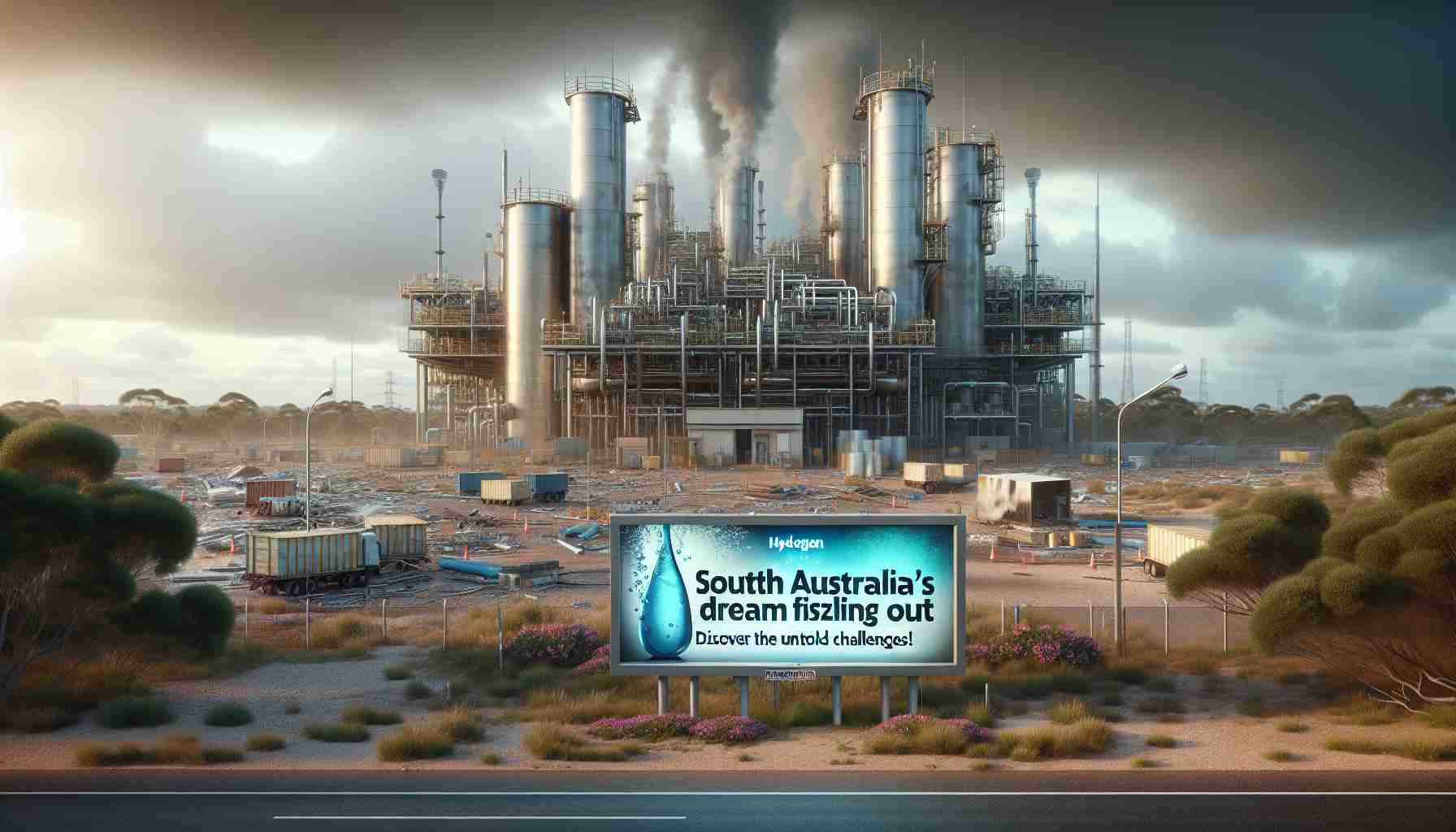- South Australia’s hydrogen power plant project faces political uncertainty and skepticism.
- The initiative, once a symbol of job growth and reduced energy costs, is now in jeopardy.
- Premier Peter Malinauskas has voiced concerns about the viability of the Whyalla project.
- There are indications of considering alternative fuels such as natural gas, deviating from the original renewable energy vision.
- The viability of the Whyalla steelworks is closely linked to the hydrogen initiative’s success.
- Future developments depend on navigating complex political and economic challenges.
South Australia’s ambitious vision for a groundbreaking hydrogen power plant may be slipping into the abyss of political uncertainty. Once a beacon of hope touted by Labor before the 2022 election, the project’s future is now clouded by skepticism and shifting narratives.
Initially unveiled as a bold promise to generate jobs, slash power prices, and cut carbon emissions, the Whyalla hydrogen plant quickly turned into a puzzle full of missing pieces. Premier Peter Malinauskas recently acknowledged the “challenges” surrounding the initiative, murmuring doubts that ignite questions about its viability. Although hundreds of millions of dollars are still earmarked for Whyalla, the plant’s lifespan appears increasingly fragile.
The vision involved harnessing renewable energy to electrolyze water into hydrogen and oxygen, propelling a cleaner future. Yet, whispers of alternative fuel options, like natural gas for the planned generators, have emerged, undermining the original promise.
As the Whyalla steelworks teeters on the edge of turmoil, linked to the project’s future, speculation runs rife. Is the government subtly shifting blame onto the steelworks’ struggles as they reconsider their hydrogen ambitions? While agreements have been inked with private companies and even plans to sell hydrogen to GFG Alliance, the steadfast commitment to this green endeavor now feels tenuous.
The burning question remains: Will South Australia’s green hydrogen dream turn into a mirage? The answer may hinge on navigating complex political waters and recalibrating ambitions amidst brewing economic storms. Keep your eyes peeled on this unfolding narrative—it’s a story that could redefine the region’s energy landscape!
Is South Australia’s Hydrogen Future in Jeopardy? Discover the Latest Developments!
The Current Landscape of South Australia’s Hydrogen Power Plant Initiative
South Australia’s aspiration to establish a pioneering hydrogen power plant in Whyalla has been met with significant political and economic challenges, raising concerns about its feasibility. Initially heralded as a transformative project, the ambitions surrounding the hydrogen initiative are now facing scrutiny, as the state’s government grapples with uncertainties.
Recent Insights and Innovations
1. Technological Innovations: The project was originally framed around utilizing advanced electrolysis technology to convert renewable energy into clean hydrogen fuel. However, technological improvements in hydrogen production methods may offer alternative pathways for efficiency and cost-effectiveness.
2. Market Trends: The global demand and market for hydrogen as a clean fuel source are on the rise, with various countries committing to hydrogen strategies. This trend has implications for South Australia’s market positioning, especially if the project can pivot back towards its original goals of low-cost and low-emission energy production.
3. Economic Considerations: The government has allocated substantial funds toward the hydrogen plant, yet concerns linger regarding job creation and the economic sustainability of the venture amid fluctuating political support. The shifting narrative indicates a potential reevaluation of financial commitments if market conditions don’t stabilize.
4. Security Aspects: With energy security becoming an increasingly urgent concern worldwide, the success or failure of this plant may significantly impact South Australia’s energy independence and resilience.
Asking the Tough Questions
1. What are the potential alternatives to the hydrogen approach?
– Alternative fuels, such as natural gas or biofuels, have been suggested as interim solutions. These may be cheaper to implement in the short term but could undermine the longer-term environmental goals initially set for the hydrogen plant.
2. How will political uncertainty affect investment in the hydrogen sector?
– Political stability is crucial for attracting investment in energy projects. Ongoing skepticism about the hydrogen plant could deter potential investors, impacting the financial backing necessary to move forward effectively.
3. Could partnerships with private firms save the initiative?
– Collaborations with private entities, like GFG Alliance, could potentially bolster the project by pooling resources and expertise, although it also raises questions regarding accountability and profit-sharing.
Related Links
For more information on the topic, check out these resources:
Australian Government – Energy
Government of South Australia
Australian Renewable Energy Agency
In conclusion, the road ahead for South Australia’s hydrogen power initiative is fraught with complications, requiring a carefully managed approach that blends innovation, political support, and market adaptability. The continued evolution of this project could ultimately serve as a litmus test for the region’s commitment to sustainable energy solutions.
